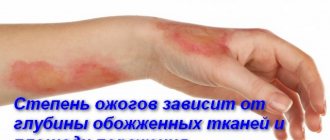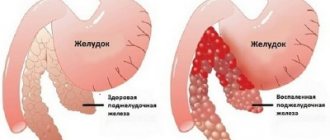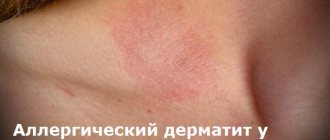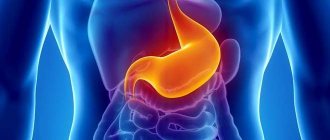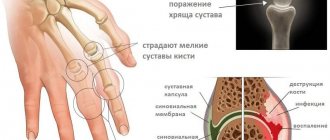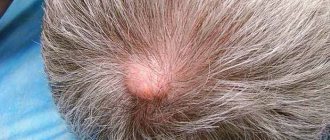Hardened growths on the soles are not uncommon. People often mistake them for ordinary calluses, but the causes of such growths vary. The plantar wart is of viral origin. People call it “thorn” because it hurts when walking, or “chicken butt” because of its appearance. A “chicken” wart looks like a very rough, keratinized growth on the foot, reminiscent of cauliflower, with black dots. The lumps are often painful and cause severe discomfort. You can get rid of them at home, but this is a rather long process, and without preliminary diagnosis it can be dangerous. It's better to consult a specialist. Modern medicine offers a sufficient number of ways to remove papilloma quickly and painlessly.
Plantar wart
Causes and symptoms of the disease
Plantar warts (like others) are not just a cosmetic defect. The formations are not malignant, they are infectious in nature, caused by the human papillomavirus. It is transmitted through contact (direct or indirect) with an infected person.
More than a hundred subtypes of HPV are known to science. Up to 90% of people are carriers of them, but not everyone gets warts. It depends on the state of the person's immune system. Papillomas are a sign of weakening of the body’s protective barriers.
Additional risk factors for the virus entering the body:
- diabetes;
- increased sweating;
- services of unqualified pedicurists;
- atherosclerosis;
- frequent use of household chemicals that irritate the skin (for washing or cleaning);
- uncomfortable, tight shoes;
- microscopic damage to the skin;
- circulatory disorders;
- wearing synthetic socks;
- flat feet;
- too dry skin;
- failure to comply with personal hygiene rules when visiting swimming pools and public baths.
The legs bear a very heavy load, so if not properly cared for, they are susceptible to the formation of not only papillomas. Before starting treatment, it is important to distinguish them from calluses or corns. This can be done based on characteristic features.
Symptoms of a plantar wart:
- clearly defined boundary;
- diameter up to 2 cm;
- the fresh spine is pinkish, then dries out, acquiring a brownish-yellow color. In some cases, they are black, whitish or retain their natural skin tone;
- in the first days the plaque is smooth, without a skin pattern. Over time, when exposed to pressure when walking, it becomes rough;
- has a multilayer structure. Under the keratinized upper part, black dots can be found - these are blood clots formed in damaged capillaries;
- blisters and corns form around a large papilloma;
- the neoplasm that forms first is called “maternal”. Gradually, other papillomas—daughter papillomas—begin to form around it. Over time, they merge, creating extensive lesions.
Growths occur in people of any age. A special feature of plantar warts in children is that they are more likely to disappear on their own as the child’s immune system improves.
Symptoms and manifestations
The main manifestation: a dense round formation on the palm or sole of the foot.
The main symptom: pain when walking and itching in the area of the wart.
This is a spine on a finger
initial stage
- a small “callus” appears on the skin,
- she's a little itchy
- slight pain when walking.
In 2-4 weeks
- a rough surface appears in the center,
- often - black dots in the center,
- along the edges there is a small roll of keratinized skin.
Why?
- Why do spines appear on the palm and sole? Because the skin here is especially dense (unlike other parts of the body). And this type of HPV virus affects just such skin.
- Why does it hurt when walking? Because a plantar wart grows inward. When walking, the weight of the body presses on the wart and it compresses the pain receptors.
- Why is itchy skin? Because the ugly cells grow and put pressure on nearby skin receptors, which leads to itching.
- Why black dots? This is the result of blockage of blood vessels in the thickness of the wart on the foot or palm.
Warts on the sole with black dots
Dimensions - 3 -10 mm. In this case, the pathological formation rises above the surface of the skin by only 1-2 mm, because it grows inward and in breadth.
Daughter warts may appear nearby. They merge with the mother and form a painful conglomerate. This is a clear indicator of decreased immunity. And this often requires drug treatment.
Sectional structure of the spine
Yellow color is the surface of the skin. Purple color - cells affected by the virus grow, forming the body of the spine.
Locations
HPV, penetrating the body, settles in the basal layer of the epidermis. While the virus is in a passive state, this process occurs extremely slowly, without external manifestations.
When the pathogen is activated under the influence of provoking factors, it spreads to the layers of the dermis and subcutaneous fat. A plantar wart begins to hurt when the virus infects the stratum corneum of the epithelium. Papillomas usually form in areas of the sole that experience maximum stress when walking. The wart becomes sandwiched between the shoe and the bone, and adjacent tissues become compacted, pressing on the nerves of the foot. The greatest discomfort is caused by the spines on the heels, in the area of the metatarsal bones.
To distinguish papillomas from other skin formations, it is necessary to undergo an examination.
Wart on the big toe: how it manifests itself
The main symptom of the disease is the presence of a formation on any toe (little toe, big toe) or in the space between the toes. The build-up appears mainly in places of greatest pressure and friction. What does a subcutaneous wart look like (pictured):
- the size varies from 1 mm to 1-2 cm or more, when there are several formations and they merge;
- the surface is rough, dense;
- the shape can be different: from oval to irregular;
- whitish color;
- small black dots may appear on the surface, which are thrombosed capillaries;
- absence of relief lines in the affected area;
- the contours are clear.
Warts on the toes cause a lot of inconvenience, interfere with walking, and often cause pain. Over time, the growth becomes denser, which only intensifies the symptoms.
Diagnostics
Diagnosis and treatment of papillomas on the foot are carried out under the supervision of a dermatologist. The specialist performs dermatoscopy - scrapes the keratinized epithelial layer, sends it for analysis to confirm (or refute) the presence of the human papillomavirus.
Dermatoscopy
If necessary, an ultrasound is performed - this allows you to understand how deep the plantar warts have grown.
Differentiated diagnosis is carried out when:
- suspected cancer;
- foot deformities;
- Reiter's syndrome to separate the wart from the keratoderma.
Attention: during syphilis, similar growths appear on the soles and palms!
They hurt very badly and are shaped like a ring or semicircle. They are differentiated using “RW analysis” (Wassermann reaction).
What is a wart?
A wart is a lump (growth, lump, papilloma, spot or small bump) on the skin that is viral in nature.
What do warts look like?
In the vast majority of cases, warts on the legs are round or oval-shaped growths.
If the wart is located on the foot or toes, its surface will peel off. When steaming and scraping the upper scales, you can find black dots - small vessels compacted due to growth.
plantar wart photo
When warts appear on the legs, the disease can quickly progress, as a result of which new growths will form and merge with each other into a single spot.
What a wart looks like depends, first of all, on its type.
Types of warts
Experts identify several types of warts:
- ordinary : hemispherical growths with a hard surface;
- characterized by small size and slight peeling;
- most often form on the knees;
- the color differs slightly from the natural skin tone.
- smooth, flat surface;
slightly raised growths;
- dense neoplasms;
dirty yellow or gray tint;
- affects the genitals and upper legs;
Why do warts appear?
The cause of warts is human papillomavirus types 1-4.
These types of diseases are not oncogenic, as a result of which the likelihood of a wart degenerating into a malignant tumor is negligible. An important feature of this disease is asymptomatic infection. In other words, a person can get the human papillomavirus, but find out about it after a long time, since the disease may not manifest itself for several weeks, months, and sometimes even years.
The appearance of warts can be caused by :
- weakened immunity;
- poor nutrition;
- liver disease;
- intestinal disease.
Warts appear especially often in children . Therefore, if a child has subcutaneous lumps on his feet, or a hole appears on his heel, the first thing you need to pay attention to is the immunity and personal hygiene of the child’s feet. In addition, the human papillomavirus can appear as growths on the hands, knees, and fingers.
Prevention of warts
The appearance of warts on the skin of the feet is not only unpleasant from an aesthetic point of view, but can also cause unpleasant and even painful sensations. Therefore, it is necessary to take preventive measures to avoid contracting the virus.
The skin of your feet needs to be taken care of especially carefully, since it is much easier for the virus to enter the body if:
- the skin of the feet is too dry, there are cracks;
- feet are prone to sweating;
- personal foot hygiene is not observed;
- a person wears uncomfortable and tight shoes;
- the skin of the legs was exposed to hypothermia.
It is important to understand that the human papillomavirus is transmitted through contact primarily in damp environments, so the most likely way to get warts on the feet is to walk barefoot in public or wear someone else's shoes.
Should I go to the doctor?
Before you begin to treat a plantar wart, it is advisable to consult your doctor.
Attention: malignant neoplasms can masquerade as papilloma!
Only a qualified specialist can determine this. You should urgently visit a dermatologist if the wart:
- sharply increased in size;
- bleeding;
- turned black;
- it hurts very much;
- unevenly colored.
After the examination, the doctor will select an effective method or remedy for removing plantar warts.
Traditional medicine tips
- Juice of celandine or garlic. The juice penetrates deep into the layers of the epithelium and kills the virus. Subcutaneous warts are treated 6 times daily. The course of treatment is up to 90 days.
- Aloe juice. The juice compress is left for 10-12 hours for a month. An allergic reaction may occur.
- Acetic acid. The acid is applied to the subcutaneous formation, which penetrates deep into the skin.
- Nail polish. The subcutaneous wart is carefully coated with varnish and wrapped in cling film (the varnish should not come into contact with healthy skin). The varnish causes necrosis of keratinized tissue and destroys the virus itself. Cannot be used for more than 2 weeks.
Prevention of warts involves strengthening the immune system and hygiene. Return to contents
Pharmacy products for removing plantar warts
For the treatment of plantar warts, drugs from various pharmaceutical groups are used.
lapis pencil
In HPV therapy they use:
- immunomodulators (Anaferon, Tsipagan, Arbidol) activate the production of antibodies and stimulate defense mechanisms. Sometimes it is necessary to take immunostimulants. Such as Ribomunil or Immunal;
- antiviral (Oxolinic ointment, Viferon, Panavir);
- multivitamins (Complivit, Vitrum, Alphabet) compensate for the lack of essential substances and enhance the defensive functions of the skin.
A combination drug, Isoprinosine, is effective against spines. It has both immunomodulatory and antiviral properties. Recommended in cases where the formation of papillomas causes a sharp decrease in immunity.
Be sure to complement the treatment with topical agents - creams, gels and ointments for plantar warts.
Gently, but at the same time effectively acting in combination with other drugs, Vartox ointment. Urea in the drug softens the tumor, and glycyrrhizic acid reduces the activity of the virus.
Other local remedies include:
- pencils (celandine, lapis);
- patches are often produced on the basis of salicylic acid, but come with other active ingredients;
- Liquid preparations penetrate well into the deep layers of the skin, affecting the entire papilloma. This group includes: Supercelandine, Iodine, Dermavit;
- keratolytics (Salipod, Ferezol) “melt” the affected tissue;
- necrotizing drugs (Condyline, Solcoderm) destroy the growth by cauterizing or mummifying pathological cells.
Attention: the active ingredients of most of the listed drugs are alkalis and acids. They must be used with caution!
Adhesive plasters and pencils are very convenient to use, but they do not always help against large and old spines.
House removal rules
Treatment at home has some rules and a step-by-step approach:
- Before applying a compress or applying a medicinal composition, you must steam your feet in order to soften the stratum corneum of the skin and make it easier for the product to reach the roots of the wart.
- To completely remove growths, it is necessary to carry out procedures regularly and not stop halfway.
- For better effect and quick relief, you can alternate drugs from the pharmacy with traditional recipes.
- HPV must be treated internally and externally.
- When using acetic acid or a pharmaceutical remedy for warts based on an acid concentrate, you should be extremely careful not to burn healthy skin. To avoid such damage, you can lubricate the area around the growth with cream or Vaseline.
- If you are unable to cure your Spitz on your own within a month, then you should seek help from a doctor.
Treatment of plantar warts at home
Most people choose to treat plantar warts at home. This is much easier to do if it has just appeared. It is most likely impossible to get rid of a thorn with deep roots without the help of a specialist. In addition, it is quite difficult to independently distinguish a “chicken” wart from other skin problems.
During procedures, safety precautions must be observed. The leg, as well as all objects used for procedures, must be clean. Before cauterization, it is better to treat the foot around the spine with a rich cream.
It is important to remember that the treatment of plantar warts involves their destruction with chemicals or toxic substances from medicinal plants. This creates some risks:
- the skin around the growth may receive a severe chemical burn;
- an incompletely extracted spine produces “daughters”, many closely spaced neoplasms are formed, which are difficult to combat;
- the virus can be transferred to healthy tissue;
- Unskilled actions sometimes provoke the “degeneration” of papilloma cells into malignant ones.
To avoid negative consequences, you must carefully follow the instructions for use of the drugs.
Cold
You can remove a plantar wart with cold not only in a clinic or beauty salon, but also at home.
CryoPharma for feet
The pharmacy chain offers similar products from several manufacturers. One of the most famous is the cream “CryoPharma for feet” , its effect is similar to the procedure of freezing the spines with liquid nitrogen, but acts in a gentle temperature regime.
The drug should be applied only with a special applicator (it is included in the kit), otherwise healthy areas of the foot may be injured.
The use of the cream is contraindicated:
- children under four years old;
- during pregnancy and lactation;
- if there is a rash, skin inflammation or injury at the site of application;
- patients with diabetes mellitus.
Attention: before using CryoFarm for feet, consult a dermatologist to make sure that the formation on the foot is a wart!
More often than not, one application is sufficient. If the spine is old, large, or deep, up to three sessions may be required. Between them you should take two-week breaks.
Wartner Cryo and some others have a similar effect
Wart patch
Plasters for plantar warts have a number of advantages in comparison with similar preparations in the form of ointments and gels. The main ones:
- absence of pain;
- local impact directly on the problem area;
- minimal likelihood of side effects.
The main advantage of this form of release is ease of use. Before gluing the leg, you need to steam it well, then cut a piece of adhesive plaster to the size of the growth, and carefully stick it on. Before using the adhesive plaster, you must carefully read the instructions, which indicate the duration of the procedure and course of treatment. You must remove the patch carefully, after first holding your foot in warm water.
The most effective for plantar papillomas are:
- Salipod;
- Ultra Pro House;
- Suda Epitact.
All of them have a number of contraindications that should be taken into account. This:
- skin damage;
- individual intolerance to salicylic acid;
- kidney diseases;
- pregnancy and breastfeeding;
- age restrictions.
Treatment methods for subcutaneous warts on the foot
Diagnosing subcutaneous warts on the foot is quite simple with just one visual examination. However, very often additional procedures are prescribed, for example, dermatoscopy, blood tests for the strain of the virus and the quantitative content of the pathogen. Before prescribing treatment for internal warts on the foot, the doctor must determine concomitant diseases and individual characteristics of the patient, which may become a contraindication to the use of a particular treatment regimen. Typically, treatment is associated with the physical elimination of plantar formations, increasing the patient’s immune status and reducing the viral load. It is not possible to completely get rid of HPV, so therapy is aimed at suppressing the activity of the virus in order to reduce the likelihood of relapse.
Instrumental removal of an internal wart on the foot
It is recommended to eliminate pain and discomfort when walking by completely removing the body of the plantar growth using effective instrumental excision methods. Such procedures are carried out within the walls of medical institutions, both public and private, using high-quality equipment and the hands of professional specialists.
Typically, manipulation requires preliminary anesthesia by administering local anesthesia or external treatment of the affected areas. All modern removal options available to doctors differ from each other in a number of factors, for example, the degree of effectiveness and safety, the duration of rehabilitation and the complexity of caring for the treated areas, as well as the likelihood of scar formation. The cost of the procedures depends on the location, size and number of subcutaneous warts on the foot.
List of the most effective methods for removing internal warts on the foot:
- Radio wave removal . This method gives an impeccable cosmetic result. Excision is performed using a waveguide. Depending on the size, location and depth of the root of the neoplasm, the type of waveguide is selected - round, triangular, ball or in the form of a radio wave scalpel. Advantages: speed, bloodlessness, no risk of inflammation and infection, no discomfort during the rehabilitation period, rapid restoration of healthy tissue, minimizing the risk of scar formation. Price - 2000 rubles, 750 hryvnia.
Folk remedies
You most likely won’t be able to remove old plantar warts at home, but it’s worth fighting against fresh ones.
Banana peel
Here are some popular recipes:
- dissolve a tablespoon of salt and vinegar (9%) in half a glass of warm water, place the plum . After a couple of hours, remove the fruit and chop it. Apply the resulting slurry to the problem area, securing with a bandage or sock. Keep the compress for three hours;
- Infuse three tablespoons of dried wormwood in a glass of boiling water for two hours. Lubricate your feet with the solution four times daily;
- banana peel is very effective . It needs to be attached to the papilloma with the wrong side and changed once a day. The course of treatment is a week;
- A well-known remedy for plantar warts is potatoes. The tuber must be cut and the feet must be wiped daily;
- wrap Kalanchoe ;
- apply a paste of ground horseradish leaves and wrap it with polyethylene on top;
- steam your leg, apply propolis , secure it with a band-aid. Carry out the procedure for three days;
- four times a day, lubricate the soles with a decoction of St. John's (a tablespoon of herb per glass of water).
Attention: if a rash, redness, itching, swelling or pain appears during treatment with folk remedies, stop using the medicine immediately.
Preventive measures will help avoid relapses.
Treatment with salicylic acid and iodine
There are many reliable recipes for eliminating growths at home. A bottle of salicylic acid is easy to purchase at any pharmacy. The product has a drying property, disinfects well and relieves inflammation.
To remove a plantar wart, a 5-10% solution of the substance is used. Before the procedure, it is advisable to steam your feet in a bath with the addition of soda or laundry soap. Hot water softens the stratum corneum and opens the pores for better penetration of the medicine.
- It is better to carry out the treatment before bedtime.
- Dry your feet with a towel and apply acid to the entire surface of the wart, without touching healthy skin.
- Cover the top with a bandage folded in several layers and secure the bandage.
- In the morning, remove, wash your foot and apply cream.
- Treatment must be repeated daily until the defect disappears. Sometimes this takes 1-2 months.
You can use the Salipod patch. It contains sulfur and salicylic acid. Thanks to this, it provides an antiseptic effect and is successfully used to eliminate various skin formations.
To cure a wart, apply the patch to dry, clean skin and leave it on for 2 days. Then the feet are steamed and the softened growth is treated with pumice. It is important to remove only the dead layer and act carefully to prevent damage to the skin. To completely eliminate a plantar wart, you will need to apply the patch several times.
You can fight warts on the feet with iodine. The substance destroys pathogenic microorganisms, cauterizes papillomas, causes them to dry out and decrease in size. The treatment must be done pointwise, avoiding any contact of the antiseptic on healthy areas. The product is applied to the formation 5 times a day. The course of treatment is about a week.
How to understand that it is not a blister
The spine does not appear spontaneously, but grows gradually. There are times when it disappears just as unnoticed. Therefore, some people live in a normal rhythm and do not even notice this process. But not everyone is so lucky. The evolution of the wart is described below.
At the initial stage:
- Only a small compaction appears on the skin, similar to a callus. In the image below you can see what a wart on the sole looks like at the very beginning of its appearance.
- This seal begins to itch and cause discomfort when walking.
- A roughness begins to appear in the very center of the thorn, which can be felt with the pad of your finger.
- Often dark spots appear in the middle of the compaction - this is a consequence of blockage of the blood vessels.
- Along the edges of the growth, the skin rises and looks like a roll of keratinized cells.
- The color of a wart on the foot is often flesh-colored or dark brown.
The main manifestation: the formation of a rounded compaction on the sole of the foot.
The main symptom: itching in the area of the growth and discomfort when walking.
Prevention methods
In order to prevent the appearance of plantar warts, you must follow a few simple rules:
- constant maintenance of immunity;
- combating excessive sweating of the feet;
- combating excessive dryness of the skin of the feet;
- wearing shoes that fit properly and are made from high-quality, not synthetic materials;
- timely treatment of foot injuries of any nature (burns, scratches);
- thorough foot care at any time of the year: washing with soap, baths;
- use of clean underwear (socks, stockings, tights).
Particular attention should be paid to foot hygiene when visiting public places: baths, saunas, swimming pools. It is necessary to use personal slippers, which must be rubberized. After visiting such places, it is a good idea to wash your feet with soap and dry thoroughly.
Useful tips
If a plantar wart has already formed on the foot, you need to remain calm and avoid stress. It is a stressful state, a state of constant tension that provokes complications and rapid progression of the disease.
When treating a wart, certain rules must be followed:
- when using solutions and liquids containing acids and alkalis, you should use a plaster in which you need to cut a hole the size of a wart; this is done in order not to damage the healthy skin around the tumor;
- it is strictly forbidden to remove keratinized wart cells on your own, as this may lead to the appearance of new ones next to the existing one;
- You absolutely cannot cut out a wart yourself, since there is a possibility of incomplete removal of the root of the wart, which will lead to its subsequent appearance in the same place, as well as the appearance of subsidiary warts.
“Super celandine” is recognized as the cheapest and most effective medicine for the treatment of plantar warts, which is freely available in pharmacies. The cost of one 1.2 ml bottle ranges from 25 to 40 rubles. The price varies depending on the type of pharmacy (private, public). This product is contraindicated for children, as well as pregnant and lactating women.
The drug "Verrukacid" is inexpensive and also effective. Its cost does not exceed 400 rubles. This product is intended for external use and has a cauterizing effect on neoplasm cells. Contraindicated for children, pregnant and lactating women.
Seals and crater-shaped holes in the wart are characteristic of this disease, but they cause discomfort and pain, especially if they are located on the bends of the foot. Pain appears from the impact of the growth and its root on the nerve endings. This happens because the feet are constantly under the load of the entire body weight. In this state of affairs, it is necessary to abandon attempts to independently treat the disease and seek help from specialists (dermatologists) who will select the optimal treatment option and eliminate pain symptoms to restore full functioning.
A wart on the foot is a viral disease and can be treated. In the history of medicine, there are cases when neoplasms went away on their own after a thorough strengthening of the immune system. This includes taking vitamins and minerals, hardening, healthy sleep in the required quantities, and walking in the fresh air. Self-healing of warts by strengthening the immune system occurs in different periods depending on the characteristics of the organism: from 3 weeks to two to three years. It is important to pay attention to your body and then complications and unpleasant consequences can be avoided. As with any other disease, a timely visit to a doctor will allow you to provide timely medical care and speed up the healing process, without resorting to interventions using modern equipment and additional costs.
Types of warts
Wearing the wrong shoes only increases the likelihood of warts. We are talking about shoes that are small in size, or very open, complete with thin soles. This also includes walking barefoot, which gains popularity in the summer - on the beach or even on your own plot of land.
Children are especially vulnerable to this problem, because it is difficult to explain to them that they should not run down the street barefoot. It is in the summer that parents often bring their children to a dermatologist and ask what to do if a wart is on the child’s leg.
First you need to determine the type of wart. There are about five species that have different descriptions. Simple warts look like small bumps that change color to a darker color over time. The size of such a wart should not exceed one centimeter.
Flat warts already grow to the sides and protrude less from the skin. In color, they can either match the skin of the foot or have a more pink tint.
There are also senile warts. They have an asymmetrical shape and a fairly dark color. In addition, they become quite hard.
In addition, warts may visually resemble a callus or small skin growth, with a faint dark tint.
Prevention is the foundation
- Wearing loose shoes.
- Treatment of excessive sweating of the feet.
- Treatment of foot injuries, scrapes and cuts.
- A healthy lifestyle and strengthening the immune system is the prevention of viral diseases, including the HPV virus. Detailed material on how to strengthen your immune system is here
I also recommend reading these materials:
Attention: if the doctor did not answer your question, then the answer is already on the pages of the site. Use the search on the site.
Ugly formations on the body have troubled humanity since ancient times. A foot wart is a skin disease caused by a virus. People with skin defects were avoided for fear of infection, and when they noticed a tumor on the sole or other part of the body, they tried to remove it as quickly as possible. What people don’t do to their plantar warts is to make them disappear forever. Until now, dermatologists are looking for the most effective and painless method of combating the disease.
Methods for treating flat warts on the leg
Maintaining general vitality and high immune status, following the rules of personal hygiene allows you to get rid of flat warts without additional treatment within several months. However, many do not consider it necessary to wait and go to the hospital for examination. When the doctor receives a complete clinical picture, he makes an appointment. In the mildest cases, the patient can get by using folk remedies. More serious cases require taking specific medications and radical removal of the flat wart on the leg.
Medicines for flat warts on the leg
In the photo there are preparations for flat warts on the leg
Complex drug therapy for HPV is very effective if it includes taking antiviral and immunostimulating agents, using external means for restoring healthy tissue and destroying growths, as well as taking vitamin and mineral complexes.
The prescription of medications often precedes radical removal, because many active substances can provoke the death of growths without instrumental intervention.
Among antiviral drugs and immune stimulating drugs, the following are most often used in the fight against flat warts on the leg:
- Allokin-alpha . It is considered one of the most effective and safe pharmaceutical drugs. It restores a person’s immune status and stimulates the body to actively suppress the human papillomavirus. Moreover, it can be prescribed even to children over 12 years of age. It is this drug that causes rapid destruction of skin tumors and helps to avoid surgical intervention. Its main disadvantage is its high cost - 4000 rubles or 2100 hryvnia.
- Lycopid . Acts as a reliable immunostimulant. Strengthens the body's protective functions and allows you to quickly reduce the pathogen population in the body, reducing the risk of the spread of the disease. Prolonged action reduces the likelihood of relapse. Price - 550 rubles, 280 hryvnia.
- Gel Panavir . Apply topically. After application, it is quickly absorbed into the epidermis, normalizes the functions of healthy cells, stimulates the immune system, and improves important metabolic processes. Allows you to stop the growth of flat warts on the leg, promotes the slow destruction of growths. Price - 135 rubles or 80 hryvnia.
- Isoprinosine . It works comprehensively. Stimulates the production of immune cells, blocks the reproduction and spread of the virus. Price - 450 rubles or 280 hryvnia.
- Aldara cream . Belongs to the group of chemotherapy drugs, because promotes the rapid destruction of various skin tumors of a benign nature. Along with this, it helps the body fight the human papillomavirus, reducing the viral load. The cream well protects nearby healthy tissues from infection. Price - 4900 rubles or 3100 hryvnia.
To remove flat warts on the leg, various pharmaceutical preparations are used, for example:
- Verrucacid . This is an alcohol solution of phenol and methacrysol. Before using it, healthy skin around the growths is treated with zinc ointment for protection. The drug is applied exclusively pointwise, because has a strong cauterizing effect and can cause burns. Quickly removes flat growths from the skin. Price - 280 rubles or 170 hryvnia.
- Bleomycin . Active cytostatic. Getting on the tissues of neoplasms, it quickly leads to the cessation of their growth, followed by complete destruction. Price - 1450 rubles or 800 hryvnia.
- Super clean . The active ingredients are sodium and potassium hydroxides. The drug is used drip. Has high cauterizing activity. In a few sessions it can remove numerous skin defects in the form of flat warts on the leg.
- Betadine cream . It has a detrimental effect on mutated cells, causing their destruction and complete removal of the flat wart on the leg. At the same time, it disinfects the treated areas of the skin, reducing the likelihood of the spread of the disease. The intake must be combined with the use of immunostimulating drugs of complex action. Price - 180 rubles or 95 hryvnia.
- Salicylic alcohol . One of the most simple remedies. An alcohol solution of salicylic acid is used not only for disinfection. It also cauterizes the tissue of a flat wart on the leg, preventing it from growing. With constant use, it completely cleanses the skin. This can cause burns to healthy skin. Price - 40 rubles or 25 hryvnia.
- Lapis pencil . Silver nitrate, which is part of it, cauterizes tumors and leads to cleansing of the skin from benign growths. Kills pathogenic microbes. Price - 125 rubles or 85 hryvnia.
The course of treatment for a flat wart on the leg should be accompanied by normalization of life. The recovery process will be faster if negative factors in the form of bad habits and excessive physical and mental activity are eliminated, a culture of personal hygiene is established and the diet is normalized.
- Read more about medications for warts on the leg
Radical removal of flat warts on the legs
If it was not possible to remove the tumor with the help of medications, the attending physician recommends getting rid of it using one of the modern instrumental methods.
Methods for radical removal of flat warts on the leg:
- Removal with a radio knife . The device generates radio waves of various frequencies, which evaporate tumors and seal each blood vessel in the treated area, thereby preventing bleeding and the transfer of the pathogen to healthy skin. Tissues not affected by HPV are not injured. Minor scars can only remain when removing a flat wart on the leg with a deeply ingrown root. The method is considered the most effective. Price - 1950 rubles, 700 hryvnia.
- Laser removal . The thin laser beam also provides targeted action. It evaporates benign tissue layer by layer, leaving a thin crust. It is noteworthy that you can get the best cosmetic effect when removing a flat wart on the leg using a laser or radio knife. There is no bleeding, scars after removal are very rare, and recovery is easy and does not take much time. The price of laser removal is 950 rubles, 600 hryvnia. See the results of laser wart removal.
- Removal with liquid nitrogen . Cooled liquid nitrogen freezes the cells of the growth, suspends all life processes in them, which leads to their rapid death. The method is fast, but not ideal, because... During the procedure, healthy cells are likely to be damaged. The recovery period is associated with the healing of the resulting blister. Price - 450 rubles, 230 hryvnia.
- Removal with a surgical scalpel . Excision of a flat wart on the leg involves the simultaneous removal of part of healthy skin. This leads to bleeding and the formation of large wounds requiring stitches. It is also possible for the virus to spread or another infection to occur. Wounds take a long time to heal, can become inflamed and require constant care. Price - 450 rubles, 270 hryvnia. See also real reviews about surgical removal of papillomas.
When removing a flat wart on the leg, consider the following:
- The growths should not show signs of tissue degeneration into malignant ones.
- The tissue around the tumors should not be inflamed.
Before removing the growths, local anesthesia is administered. The most precise impact is carried out so as not to cause injury to healthy skin. After the procedure, there is a recovery period, which includes careful treatment of the treated areas, antiseptic treatment and taking all medications prescribed by the doctor. If a flat wart on the leg is not completely removed, the procedure is repeated only after the wound has healed.
Note! If there is a need to collect material for histological examination, then the tissue of the growth is first taken, and then the procedure is performed.
Preventing the appearance of thorns on the soles
It is better to prevent any trouble than to deal with it and its consequences later. And the subject of this topic is no exception. To keep your body healthy and your skin clean and smooth, you need to follow simple rules.
- Be sure to check your body for the presence of the HPV virus. And if it is present in the body, take measures to get rid of it.
- Choose loose and comfortable shoes.
- Avoid walking barefoot in public areas - swimming pools, saunas, showers.
- Lead a healthy lifestyle, strengthen your immune system.
- Maintain hygiene, change socks every day
- If you receive a foot injury, even a small one, it is necessary to carry out treatment.
Treatment
In 90% of people, a wart on the foot or palm goes away without treatment at an early stage, and in 30% of cases - in the first 3 months. The immune system suppresses the virus and heals the skin. The time of self-healing depends on the stage of the process: from 2 weeks to 1.5 years.
When should a spine be treated?
When the body itself cannot cope with the disease and needs help:
- if it hurts a lot,
- if it interferes with walking,
- if it has grown to a large size,
- if subsidiaries appear nearby.
How and with what to treat?
Removal is a treatment method that is successful in 98% of patients.
1) Removal with drugs
For these purposes, locally necrotizing agents are used.
- Veruclin is a relatively new, modern, effective drug that removes warts in one application without any consequences,
- Solcoderm (detailed article about this drug - link),
- Vartox (read in more detail - link),
- duofilm (instructions),
- Collomak (instructions),
- super clean,
- verrukacid, or feresol (read instructions) - acts more gently, efficiency is good,
- lapis (read about lapis pencil) - effective with long-term use.
Most of these products contain acids or alkalis. Removal of plantar warts (spikes) occurs through a chemical burn of the skin. The wart dies. And in this place there remains an inconspicuous scar.
Treatment time in most cases for drugs is: 1 - 5 weeks (on average 14-20 days).
Also, to prepare for removal procedures, you can glue the Salipod callus patch to the wart (2 days), or cut off the spine with nail scissors.
The only exception to the mentioned remedies is the drug “Veruklin” - the most modern of the described remedies. It works almost similarly to the popular salon method of cryodestruction, only it is more gentle. At least you don’t have to go to a clinic or medical center and pay 600 - 3,000 rubles there for the removal of one wart. And if, as often happens, there are several warts, then the price of cryotherapy in a salon or medical center may be too high.
With Veruclin you can remove warts at home in one application. Exactly the same principle. A bottle of the drug, designed for 12 uses, costs only about 700 rubles - i.e. You can remove one wart for about 60 rubles.
It is very easy to use the drug, and, unlike the remedies described above, it does not require special preparation: the use of a callus plaster, preliminary cutting of the wart, and so on. Simply apply a drop of Veruclin to the applicator and apply this applicator to the wart for 40 seconds. The wart will freeze, and then, within two weeks, the wart will turn into a scab, which will then fall off on its own. Veruclin is harmless and easy to use, so it can be used to remove warts in both adults and children.
2) Instrumental removal.
a) Soft laser. (read more) Your wart will evaporate under the action of the laser. You will have a deep wound at this location. The wound will heal in 10-14 days.
Here is a video of laser wart removal:
Here are the reader reviews: link
b) Liquid nitrogen. (more about this method) Deep freezing of tissue occurs. A bubble forms. It will be soooo much and then it will hurt!! Heals in 14 days.
This is exactly the method of cryodestruction that we mentioned above - at home, the drug “Veruclin” works according to the same cryo-principle (freezing a wart). Only the pharmacy "Veruklin" is more gentle, does not lead to the formation of wounds, and its bottle for 12 warts is about 10 times cheaper than one cryo-procedure in a medical center.
When to see a doctor
At first glance, it may seem that a wart is a common tumor that does not need to be treated. However, this opinion is a misconception! Timely therapy will help get rid of the development of pathology and painful symptoms. There are several serious signs that indicate that you need to see a doctor urgently:
- papilloma will change its shape and color;
- the surface of the formation becomes heterogeneous;
- a wart on the leg hurts;
- their number is rapidly increasing;
- itching intensifies at the site of the tumor;
- the borders of the wart become unclear;
- the growth becomes inflamed and bleeds.
Doctors' opinions on the most effective methods of treating warts and papillomas
The chief physician of Moscow City Hospital No. 62 describes his vision on this matter. Anatoly Nakhimovich Makhson Medical practice: more than 40 years.
“I have been treating people’s papillomas and warts for many years. I’m telling you as a doctor, papillomas along with HPV and warts can really lead to serious consequences if they are not dealt with.
The human papillomavirus is present in everyone on whose body there are papillomas, moles, warts and other pigmented formations. According to rough estimates, 80-85% of the planet's population has it. By themselves they are not dangerous. The problem is that an ordinary papilloma can become melanoma at any time.
These are incurable malignant tumors that kill a person in just a few months and from which there is no salvation.
Unfortunately, in Russia and the CIS countries, pharmaceutical corporations sell expensive medications that only relieve symptoms, thereby hooking people on one drug or another. That is why in these countries there is such a high percentage of cancer diseases and so many people suffer from “non-working” drugs.
The only drug that I want to recommend, and it is also officially recommended by WHO for the treatment of papillomas and warts, is Papinol. This drug is the only remedy that has an effect not only on external factors (that is, it removes papillomas), but also acts on the virus itself. At the moment, the manufacturer has managed not only to create a highly effective product, but also to make it accessible to everyone. In addition, within the framework of the federal program, every resident of the Russian Federation and the CIS can receive it for 149 rubles.”
To find out more, read this article.
What are the types of warts on the feet?
Various types of warts may appear on the legs, mainly:
- Flat. They are yellowish formations of a round or oval shape in the form of a tubercle with a flat top. Such growths are usually small in size (up to 5 mm). They may itch, but do not cause any particular pain. Most often they form in children and adolescents and affect the skin of the legs - soles, shins, knees, feet.
- Ordinary. Warts are round or irregular in shape and appear as a flesh-colored bump with a dense, wrinkled surface. They are located on the back of the feet near the nails. Affects people of any age. Not causing much concern other than itching.
- Plantar (spikes) are gray-yellow growths that are dense to the touch with black dots inside (clogged blood vessels). They look like a callus. Appear on the soles (feet) in places of contact with shoes. They can form at any age. When pressing on the spine, pain and a burning sensation may occur.
- Senile warts. Such formations resemble in their appearance a nodule covered with coarse dry crusts. These are quite large growths (up to 6 cm) of a dark, almost black color. Their shape resembles a polyhedron. They appear after 40 years and affect the surface in any place except the soles. They do not cause pain, but they often itch.
Attention! Foot warts can be distinguished from each other by their characteristics. In any case, when they appear, you need to consult a doctor to clarify the diagnosis.
